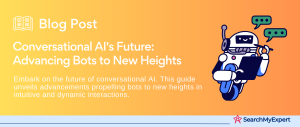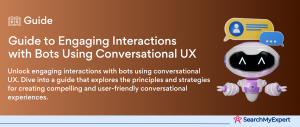Bot Personalization Techniques: Crafting a Tailored User Experience
The Rise of Bots in the Digital Age
In the ever-evolving digital landscape, bots have become ubiquitous. These are essentially software applications programmed to perform automated tasks. Think of them as digital assistants, tirelessly working in various fields – from customer service to data analysis. Their roles are as diverse as their applications, acting as helpful entities in our day-to-day internet interactions.
The Essence of Bot Personalization
Bot personalization stands at the forefront of this technological revolution. It’s about customizing the bot’s interactions and responses to suit individual user preferences, needs, and behaviors. Imagine a bot that knows you, understands your likes and dislikes, and interacts with you in a way that feels almost human. That’s the core of bot personalization.
Why Personalize?
- Increased Engagement:
Personalized bots are more engaging. They speak the user’s language, understand their needs, and provide relevant information, making interactions more meaningful. - Higher Conversion Rates:
When bots are personalized, they resonate more with users. This relevance can lead to increased conversion rates as users feel understood and valued. - Enhanced Customer Satisfaction: Personalized bots can significantly improve customer satisfaction. They provide a tailored experience, making users feel special and heard, which is crucial in today’s customer-centric world.
Understanding User Context
The Data Driving Personalization
In the realm of bot personalization, understanding the user context is pivotal. This understanding is built on various types of data:
- User Demographics:
This includes age, gender, location, language, and more. These data points help tailor the bot’s language, tone, and even the content of its messages. - Preferences: Knowing user preferences, such as interests or dislikes, allows the bot to make more relevant suggestions or avoid certain topics.
- Browsing History:
What has the user looked at? What are they interested in? This history gives the bot clues about the user’s current needs and interests. - Past Interactions:
How has the user interacted with the bot previously? This helps in understanding the user’s behavior and patterns, enabling the bot to adapt its responses.
Significance of User Segmentation
User segmentation plays a critical role in bot personalization. It involves grouping users based on shared characteristics or behaviors. This segmentation allows for more targeted and relevant interactions. For instance, a bot might use a more formal tone with older users while adopting a casual style with younger ones.
Context-Aware Personalization Examples
- Personalized Greetings:
A bot recognizing a returning user might say, “Welcome back, John! Looking for more science fiction books today?” - Language Style Adaptation: For a teenager, the bot might use trendy slang, whereas, for a professional, it might stick to a more formal tone.
- Tailored Recommendations:
A bot can suggest products or content based on the user’s past interactions. For example, if a user often looks up healthy recipes, the bot might prioritize such content in future interactions.
By leveraging these data types and user segmentation, bots can create a context-rich, personalized experience that resonates more deeply with each user, enhancing the overall effectiveness and satisfaction derived from the interaction.
Leveraging Conversational Techniques
Embracing Conversational Design Principles
In the realm of bot personalization, conversational design is paramount. It’s about crafting bot interactions that feel natural and human-like. Here are the key principles:
- Clarity and Brevity: The bot should communicate clearly and concisely, avoiding confusion and misinterpretation.
- Consistency in Tone: The bot should maintain a consistent tone that aligns with its personality and the brand it represents.
- Contextual Awareness: The bot needs to understand and remember the context of the conversation, building on previous interactions.
The Art of Dynamic Responses
Dynamic responses are the heartbeat of engaging bot conversations. These are not pre-scripted replies but responses that adapt to user input and sentiment. For instance, if a user expresses frustration, the bot might respond with a more empathetic and soothing message. On the other hand, if the user seems happy, the bot can match that energy with an equally positive tone.
Injecting Humor, Empathy, and Active Listening
- Humor:
When appropriate, humor can greatly enhance the user experience. It makes interactions more enjoyable and relieves tension, but it’s crucial to use it wisely and contextually. - Empathy:
A bot that can understand and respond to the user’s emotions creates a more personalized and comforting experience. For example, if a user is confused, the bot can acknowledge that feeling and offer additional help or clarification. - Active Listening: This involves the bot reflecting on what the user has said and asking follow-up questions. It demonstrates that the bot is paying attention and values the user’s input.
Incorporating these conversational techniques helps create bot interactions that are not only effective and efficient but also enjoyable and relatable, fostering a deeper connection between the user and the bot.
Employing AI and Machine Learning
Harnessing AI for User Data Analysis
In the domain of bot personalization, Artificial Intelligence (AI) and Machine Learning (ML) algorithms are game-changers. They analyze vast amounts of user data to predict needs and preferences. Here’s how they work:
- Data Crunching: AI algorithms can sift through user demographics, preferences, browsing history, and past interactions. This helps in identifying patterns and preferences unique to each user.
- Predictive Analytics:
Based on this analysis, AI can predict future user needs, suggesting solutions even before the user explicitly expresses them.
The Role of NLP in Understanding User Intent
Natural Language Processing (NLP) is crucial for interpreting user language. It helps the bot understand not just the words, but the intent and emotions behind them. For example, NLP enables a bot to distinguish between a casual inquiry and an urgent request, allowing it to respond appropriately.
Advancing Personalization with Reinforcement Learning
Reinforcement Learning (RL) is a type of ML where the bot learns through trial and error, continuously improving its recommendations and conversational flow. Here’s how it elevates the user experience:
- Feedback-Driven Learning:
The bot learns from user interactions. Positive outcomes reinforce behaviors, while negative feedback prompts adjustments. - Adaptive Conversational Flow: Over time, the bot becomes adept at navigating conversations, making dialogues smoother and more natural.
- Refined Recommendations:
The bot’s suggestions become more accurate and relevant, as it learns what works best for each individual user.
Employing AI, NLP, and RL in bot personalization transforms a standard bot into a dynamic, learning entity, capable of offering a truly tailored and continually evolving user experience.
Implementing Personalization Strategies
Tailoring Techniques Across Bot Applications
Personalization in bots is not a one-size-fits-all strategy. It varies across different sectors. Let’s look at some examples:
- E-commerce Bots:
They use user data to provide personalized shopping experiences. This includes suggesting products based on browsing history or past purchases, and offering tailored discounts. - Customer Service Bots:
Here, personalization focuses on understanding and solving customer issues efficiently. These bots might recall past interactions to resolve issues quicker. - Educational Bots: In education, bots can adapt to the learning style and pace of the student, offering customized learning materials and quizzes.
Dynamic Content and Personalized Recommendations
- Dynamic Content: Bots can modify the content of their conversations based on user preferences. For instance, a bot could display sports news to a sports enthusiast while showing technology news to a tech-savvy user.
- Product Recommendations:
E-commerce bots excel here, suggesting products based on the user’s shopping history, cart contents, and preferences. - Personalized Offers:
Bots can also provide special deals or discounts tailored to the user’s interests, incentivizing them to make a purchase.
Customizing Greetings, Calls to Action, and Avatars
- Personalized Greetings: Bots can greet users by name or reference their last interaction, creating a friendly and familiar atmosphere.
- Tailored Calls to Action: Based on user data, bots can craft calls to action that resonate more with the user, thereby increasing the likelihood of a positive response.
- Adaptive Avatars:
Some advanced bots can even change their avatars to match the user’s preferences, making the interaction more engaging and personalized.
Balancing Personalization and Privacy
Transparency and User Control
In the delicate dance of bot personalization, transparency and user control are pivotal. Users must be aware of what data is being collected and how it’s being used. Here’s why this is crucial:
- Informed Consent: Users should have the option to consent to data collection and understand the purpose behind it.
- Control Over Data:
It’s imperative that users have control over their data, including the ability to update or delete it.
The Choice to Opt-In or Out
Personalization isn’t always everyone’s cup of tea. Therefore, providing users with options to opt-in or out of personalization features is essential. This respects user preferences and enhances trust:
- Opt-In Options:
Users should be explicitly asked if they wish to enable personalization features. - Easy Opt-Out:
There should be a straightforward way for users to opt-out of personalization, should they change their mind.
Upholding Data Security
To safeguard user trust, robust data security practices are non-negotiable. Here’s what this entails:
- Secure Data Storage:
Ensuring that user data is stored securely and is inaccessible to unauthorized entities. - Data Encryption: Encrypting data during transmission and storage adds an extra layer of security.
- Regular Security Audits: Conducting frequent audits and updates to security protocols to protect against new threats.
Balancing personalization with privacy is a tightrope walk. However, by focusing on transparency, offering choices for personalization, and ensuring top-notch data security, bots can provide a personalized experience without compromising user privacy.
Measuring Success and Iterative Improvement
Key Metrics for Personalization Effectiveness
To gauge the impact of bot personalization, specific metrics are essential. These include:
- Engagement Rates:
Measures how users interact with the bot. High engagement suggests effective personalization. - Conversion Rates:
Tracks if personalized interactions lead to desired outcomes, like sales or sign-ups. - User Satisfaction Surveys:
Direct feedback from users on their experience with the bot. It’s a goldmine for insights.
The Role of A/B Testing
A/B testing is a powerful tool in optimizing bot personalization. It involves comparing two versions of the bot to see which performs better. Here’s why it’s important:
- Performance Optimization:
By testing different strategies, you can find what resonates best with your audience. - Data-Driven Decisions:
A/B testing provides concrete data to base improvements on, rather than guesswork.
Embracing Continuous Improvement
The journey to perfecting bot personalization is ongoing. Continuous improvement, driven by data and feedback, is key:
- Ongoing Data Analysis: Regularly analyze interaction data to understand what’s working and what’s not.
- User Feedback Incorporation:
User feedback should be a cornerstone of the improvement process. It’s direct insight into user needs and preferences. - Adaptation and Evolution: The digital landscape is ever-changing. Bots need to evolve continuously to stay relevant and effective.
Concluison
Measuring the success of bot personalization is a multifaceted process. It involves tracking specific metrics, employing A/B testing for optimization, and committing to an ongoing cycle of analysis and improvement.
Let our Bot Service Company guide your bot strategy.
Table of Contents
Toggle






